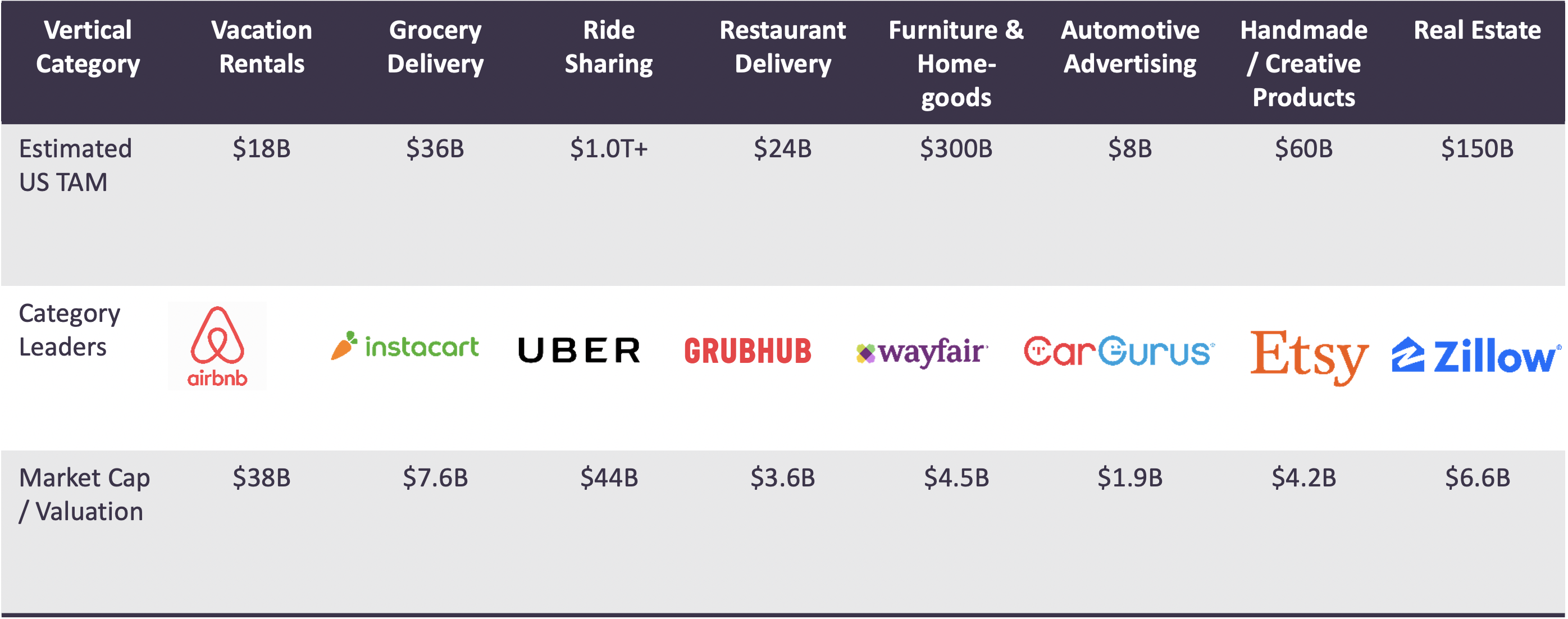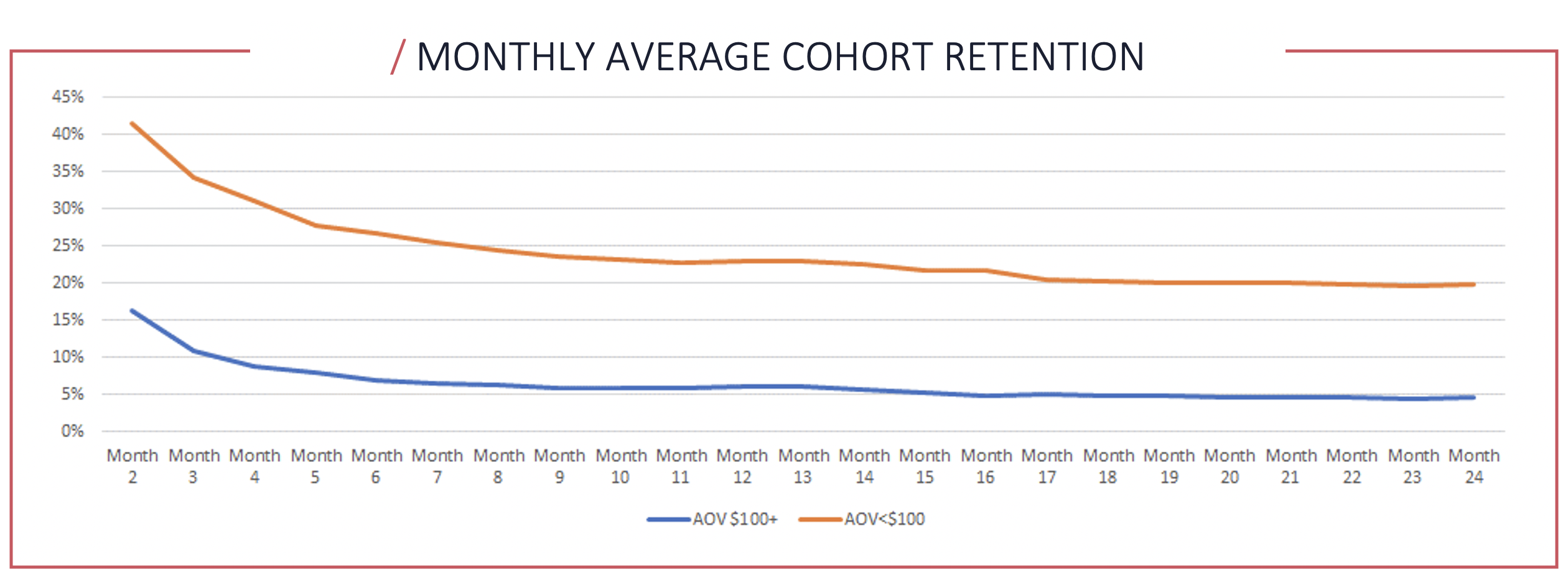By Jim Ferry
The internet has and will continue to change how consumers and businesses purchase goods and procure services.
When Amazon launched in 1995 as an online bookstore, most consumers had never made a purchase online. Amazon now has 197M monthly website visitors and 95M consumers that subscribe to their Prime membership offering. One of the reasons Amazon has been able to reach online retail dominance is its third-party marketplace that represents nearly ~30% of Amazon’s $195B of online sales.
While Amazon’s business model promotes low price points and high consumer purchase recurrence, consumers are gaining comfort purchasing much more expensive items via marketplaces including diamond rings via Rare Carat, cars via CarGurus, and homes via Zillow. The entire consumer shopping experience has been altered by the convenience of online ordering.
Amazon’s marketplace has helped pave the way for consumer behavior to support a new wave of online marketplaces. While every business is unique, as Volition evaluates potential investments in these online marketplaces, we initially look at:
- Market size
- Supply and demand acquisition
- Retention
- Price point
Market Size
The most successful online marketplaces operate in the largest markets. Success always brings competition, so there must be room for competitors and new entrants. Given marketplace revenue models are typically a small percentage broker fee of the total gross merchandise volume (GMV), it is critical to have a large enough market opportunity to reach economies of scale and profitability.

In B2B SaaS, a ~$1B total addressable market (TAM) may be large enough to have an interesting outcome given high gross margin profiles. In contrast, a ~$1B TAM for an online marketplace business may only result in ~$100M of gross profit, assuming a 10% take rate and 100% market penetration. This most likely is not enough runway to have an interesting outcome for economics of scale and sustainable growth. Market size is also correlated to the supply/demand acquisition cost stability.
Supply and Demand Acquisition
Almost all marketplace business models experience a bottleneck to growth on either supply or demand. At scale, the best businesses can experience organic acquisition on either, or both, supply and demand to avoid a dual-sided acquisition cost. For example, homeowners almost always utilize Airbnb for distribution when renting their homes due to the consumer demand. Inversely, Uber and Lyft have the most supply of drivers that creates organic acquisition of consumers.
However, this organic acquisition is more difficult for earlier stage companies. Ideally, most of the time and marketing spend is focused on one side of the marketplace to avoid high burn rates associated with a double-sided CAC. This may change over the life of the investment, but there must always be a concerted effort to scale supply and demand linearly to avoid a poor user experience.
Retention and Price Point
Revenue retention of online marketplaces needs to be evaluated alongside average order value (AOV). In general, public markets have rewarded marketplaces with lower price points and higher purchasing recurrence when compared to higher price point, low recurrence or one-time purchases. This is because there is a limit on customer acquisition spend in low-frequency purchases, where higher retention businesses with more predictable retention dynamics can pay back CAC over a longer period of time.
Volition’s research has indicated that, on average, revenue cohorts of companies with an AOV less than $100 tend to stabilize at ~20% of first months spend. In contrast, companies with an AOV greater than $100 on average tend to stabilize at ~5% of first months spend. As a general statement, any monthly cohort retention greater than these two stabilization figures respectively is considered an outlier.

Verticals Ripe for Disruption
The first wave of successful online marketplaces were primarily horizontal, serving the sale of goods across multiple categories. In the second wave, these horizontal marketplaces were unbundled by vertical-specific marketplaces such as Verb for musical instruments, Zillow for home buying, CarGurus for automobiles, and Wayfair for furniture.
The next wave of marketplace businesses are focused primarily on consumer services such as Wag for dog walking, Instacart for grocery delivery, Uber for ride-hailing, and UpWork for freelance workers.
Tracing the Future
While there are still opportunities for the vertical disruption of the sale of goods, we are in the early innings of online marketplaces for services. Volition has experience across multiple online marketplace business models. Our investment in Prosper was the first peer-to-peer lending marketplace in the US to help consumers secure small personal loans. GlobalTranz brought pricing transparency to the freight brokerage process by creating an online freight brokerage marketplace. Recycle Track Systems (RTS), is connecting waste haulers with businesses through tech-enablement.
We also provide a unique perspective to consumer-facing online marketplaces around customer acquisition strategies at scale given our consumer portfolio experience including Chewy.com (NYSE: CHWY). We are excited to apply this knowledge to help entrepreneurs build the next online marketplace disruptor.


Photo by Allie Smith on Unsplash

